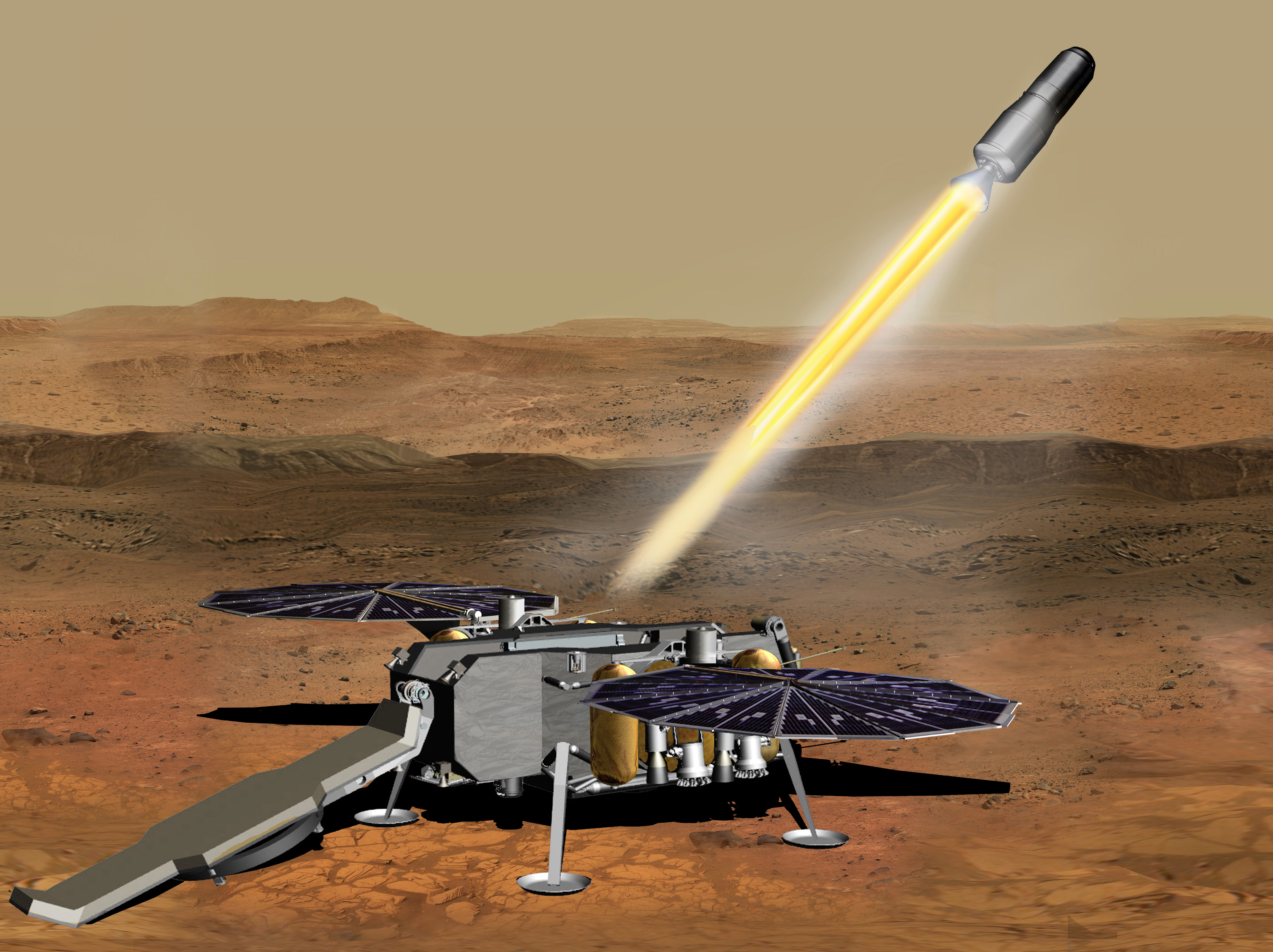
Scientists will have to wait a little longer to get their hands on pristine Mars samples that might hold evidence of ancient Red Planet life.
NASA and the European Space Agency (ESA) are working together to haul back to Earth several dozen Mars samples, which are being collected by NASA's Perseverance rover on the floor of the 28-mile-wide (45 kilometers) Jezero Crater. Jezero is a great place to do such work, NASA officials have said, because billions of years ago it harbored a big lake and a river delta, potentially tempting habitats for life.
The tentative plan had called for the 2026 launch of a sample-return lander (SRL) carrying a NASA Mars ascent vehicle (MAV) and an ESA-built fetch rover. The fetch rover would pick up a container holding Perseverance's samples and bring them back to the MAV, which would launch them into Mars orbit. Up there, the sample container would be transferred to an ESA Earth-return orbiter (ERO), which would bring the material back to Earth in 2031.
Related: NASA's Perseverance Mars rover nabs 8th rock sample on the Red Planet
But the plan has changed a bit, NASA announced today (March 28).
"Detailed analysis of SRL landed mass requirements has led NASA to adopt a dual-lander architecture, with the second lander carrying the European-provided fetch rover," NASA officials wrote in a description of the agency's allocations in the White House's 2023 federal budget request. That request, which still must be approved by Congress, gives NASA $26 billion for the 2023 fiscal year, which begins Oct. 1.
"The development of a second lander necessitates a move to a 2028 launch date and 2033 sample return date and is consistent with the Mars Sample Return Independent Review Board's (IRB) finding that a dual-lander architecture may improve the probability of mission success," they added.
Get the Space.com Newsletter
Breaking space news, the latest updates on rocket launches, skywatching events and more!
The ERO launch has also been delayed, from 2026 to 2027, according to the budget documents.
The budget request allocates $822 million to Mars sample return in fiscal year 2023, an increase of $169 million for the project over last year's request. The increase is not occurring in a vacuum; it's "placing pressure on the rest of the Planetary Science portfolio and may impact the balance of the portfolio in future years," NASA officials wrote in the budget document.
For example, the extra money now required for Mars sample-return was a factor in NASA's decision to delay the launch of its NEO (near-Earth object) Surveyor mission by two years, to no earlier than 2028, and to discontinue funding for the international Mars Ice Mapper project, agency officials wrote.
Mike Wall is the author of "Out There" (Grand Central Publishing, 2018; illustrated by Karl Tate), a book about the search for alien life. Follow him on Twitter @michaeldwall. Follow us on Twitter @Spacedotcom or on Facebook.
Join our Space Forums to keep talking space on the latest missions, night sky and more! And if you have a news tip, correction or comment, let us know at: community@space.com.

Michael Wall is a Senior Space Writer with Space.com and joined the team in 2010. He primarily covers exoplanets, spaceflight and military space, but has been known to dabble in the space art beat. His book about the search for alien life, "Out There," was published on Nov. 13, 2018. Before becoming a science writer, Michael worked as a herpetologist and wildlife biologist. He has a Ph.D. in evolutionary biology from the University of Sydney, Australia, a bachelor's degree from the University of Arizona, and a graduate certificate in science writing from the University of California, Santa Cruz. To find out what his latest project is, you can follow Michael on Twitter.









